13C NMR Spectral Prediction by Means of Generalized Atom Center Fragment Method
Abstract
:Introduction
Generalized atom center fragment (GACF)
- Independent non-aromatic single ring system
- Fused non-aromatic ring system
- Bridged ring system
- Spiro ring system
- Independent aromatic single ring system
- Fused aromatic ring system
- Conjugated system
- Cumulene system
- Acyclic system
- select a center atom
- get a class for the center atom
- capture a core structure for the center atom (the core structure measurement is shown in blue in Table 1 in the right column)
- capture environmental substituents (which are part of the GACF) for the GACF according to the number of the layers
13C NMR knowledge extraction and chemical shift prediction
- input a structure (draw a structure through a graphic user interface)
- for each carbon atom, extract a 2-GACF (2 level GACF) substructure from the structure
- search the 2-GACF against 2-GACF 13C NMR KB
- if this 2-GACF is found from the 2-GACF KB, the carbon’s chemical shift is predicted
- if not:
- extract a 1-GACF (1 level GACF) substructure from the structure
- search the 1-GACF against 1-GACF 13C NMR KB
- if this 1-GACF is found from the 1-GACF KB, the carbon’s chemical shift is predicted with less accuracy
- if not report: “cannot predict chemical shift for this type of carbon atom”
- go to 2
Results and conclusions
- algorithms to correctly classify the center atoms and their chemical environment
- the quality of the structures-spectra database
References
- Pretsch, E.; Simon, W.; Seibl, J. Tables of Spectral Data for Structure Determination of Organic Compounds, 2nd Ed. ed; Springer Verlag: Berlin Heidelberg, 1989. [Google Scholar]
- Clerc, J. T.; Sommerauer, H. Anal. Chim. Acta 1977, 95, 33.
- Small, G. W.; Jurs, P. C. Analy. Chem. 1984, 56, 1314.
- Schweitzer, R. C.; Small, G. W. J. Chem. Info. Comput. Sci. 1996, 36, 310.
- Mitchell, B. E.; Jurs, P. C. J. Chem. Info. Comput. Sci. 1996, 36, 58.
- West, G. M. J. J. Chem. Info. Comput. Sci. 1993, 33, 577.
- Kvasnicka, V.; Skelenak, S.; Pospichal, J. J. Chem. Info. Comput. Sci. 1992, 32, 742.
- Anker, L. S.; Jurs, P. C. Anal. Chem. 1992, 64, 217.
- Bremser, W. Anal. Chim. Acta 1978, 103, 355.
- Robein, W. Mikrochim. Acta 1986, 2, 271.
- Chen, L.; Robien, W. Chemom. Intell. Lab. Syst. 1993, 19, 217.
- Dubois, J. E.; Carabedian, M.; Dagane, I. Anal. Chim. Acta 1984, 158, 217.
- Panaye, A.; Doucet, J.-P.; Fan, B. T. J. Chem. Info. Comput. Sci. 1993, 33, 258.
- Munk, M. E.; Lind, R. J.; Clay, M. E. Anal. Chim. Acta 1986, 184, 1.
- Xu, J. J. Chem. Inf. Comput. Sci. 1996, 36, 25.
- Sample Availability: not available.
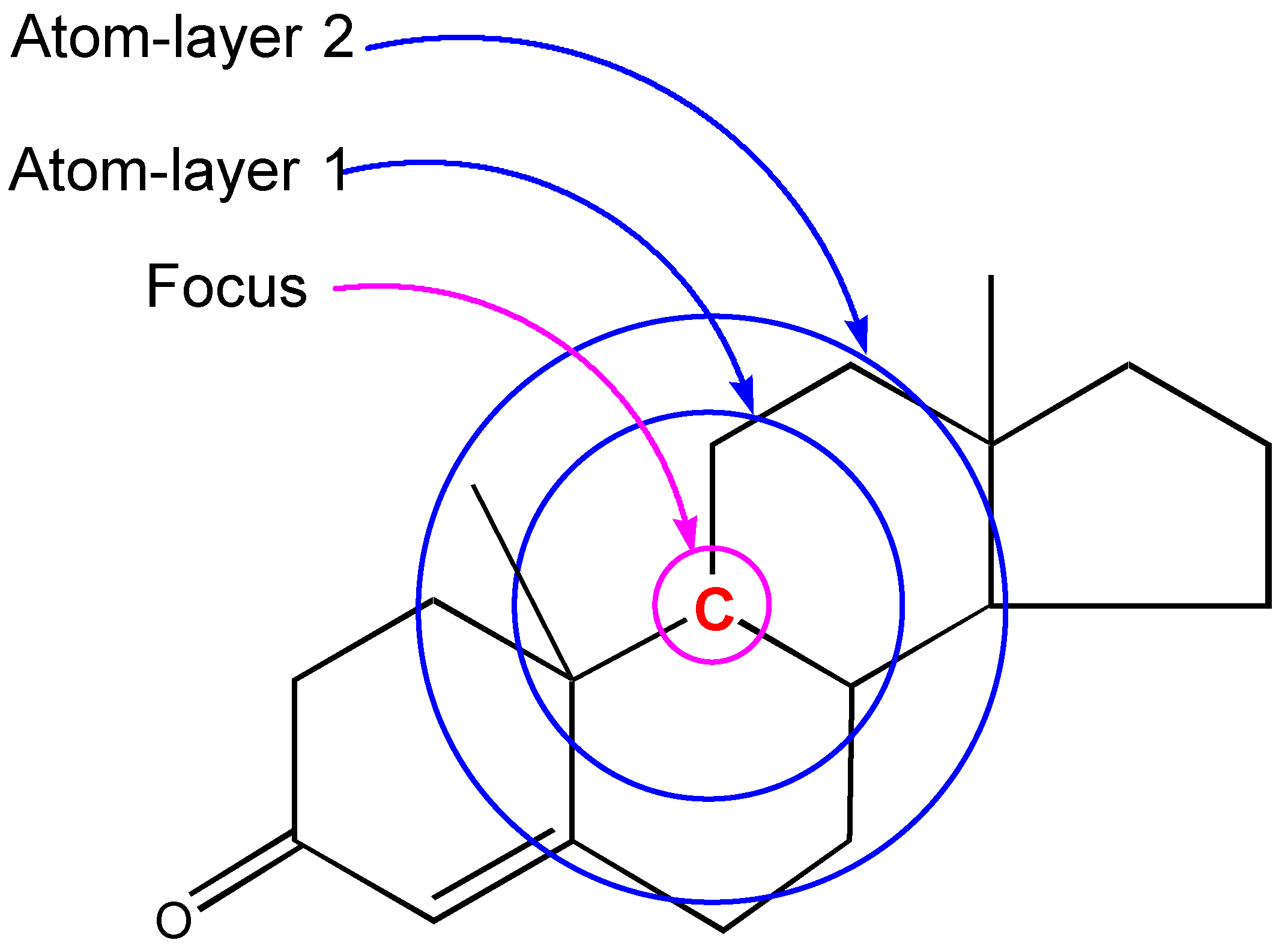

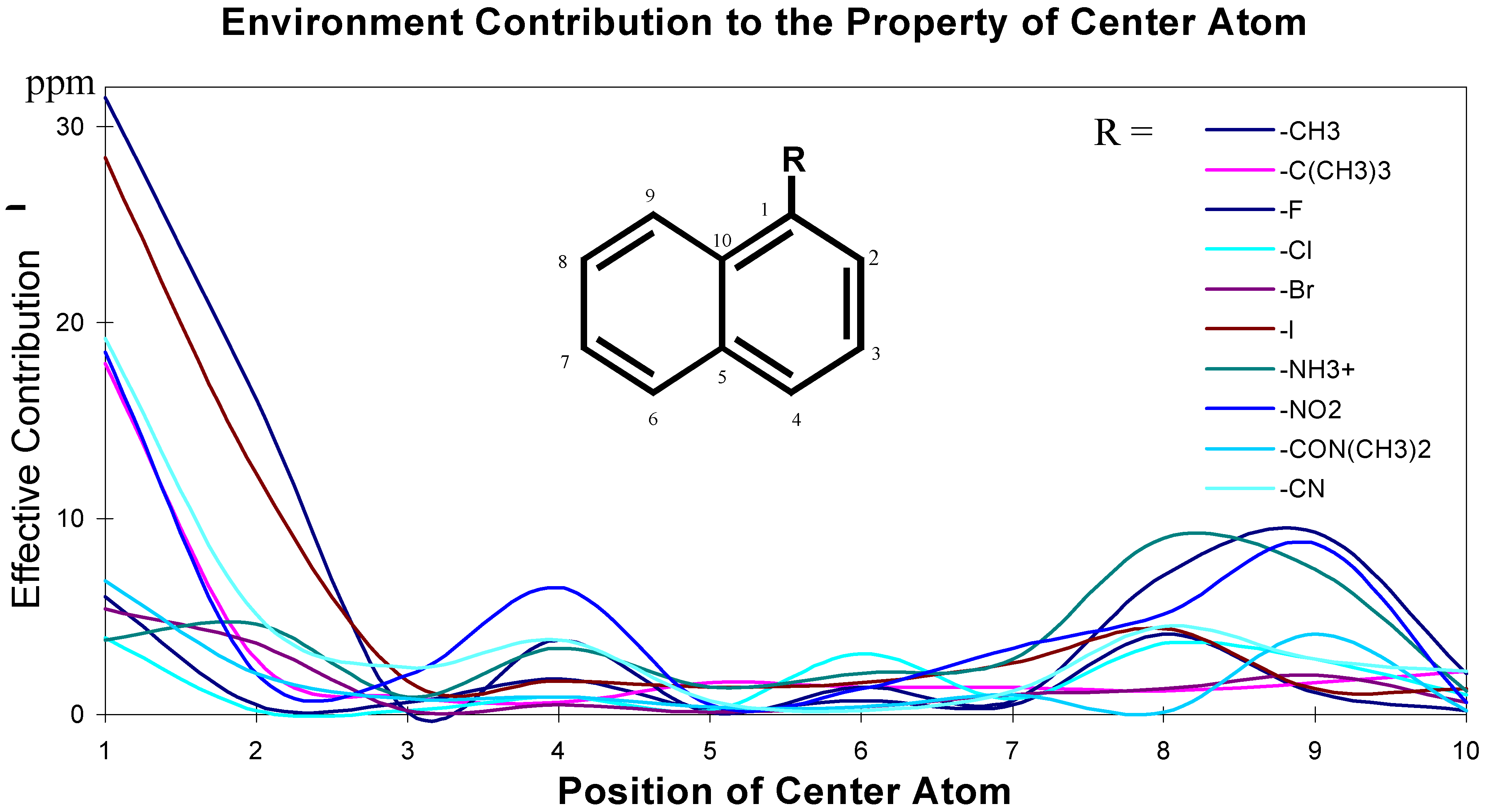
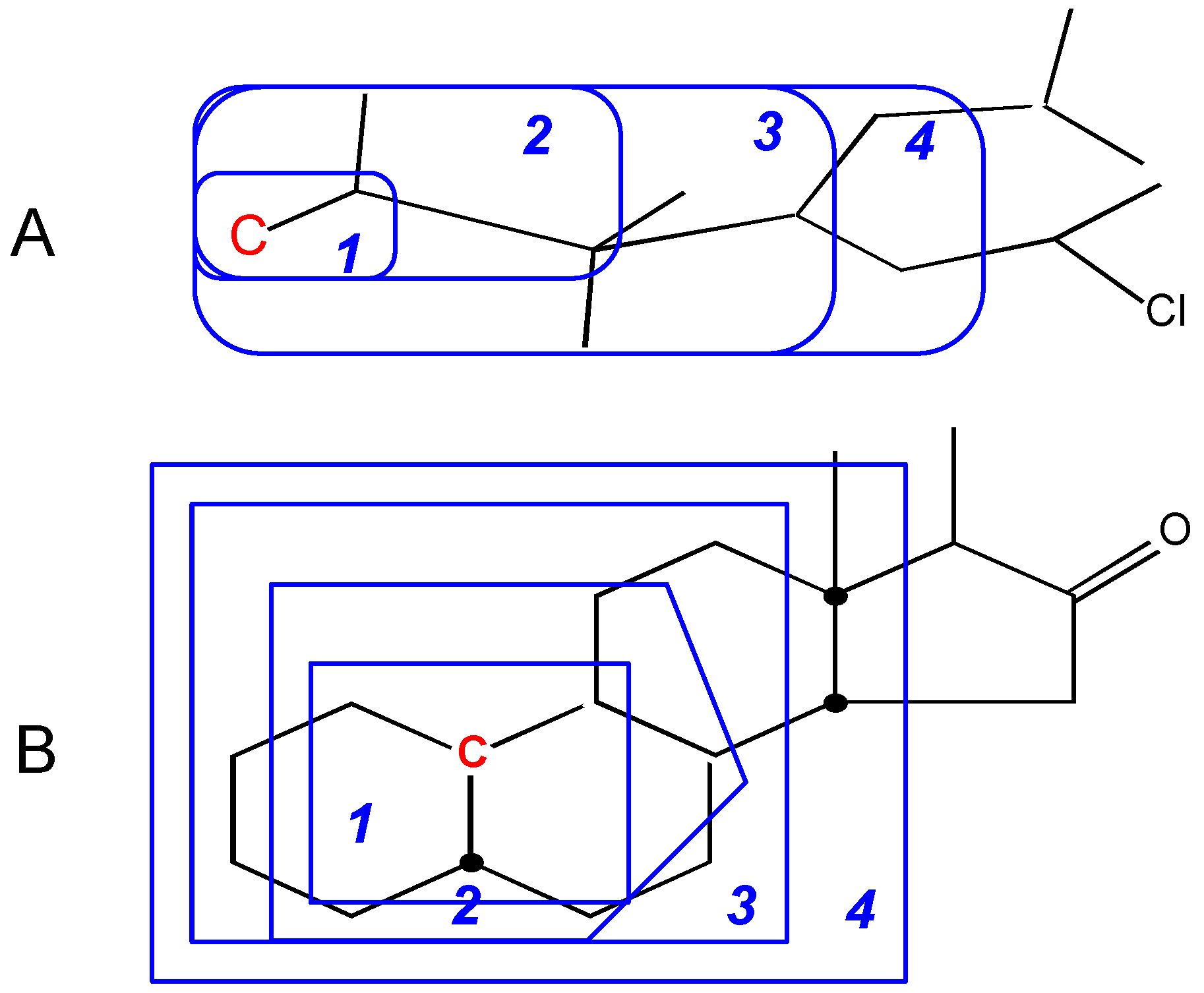
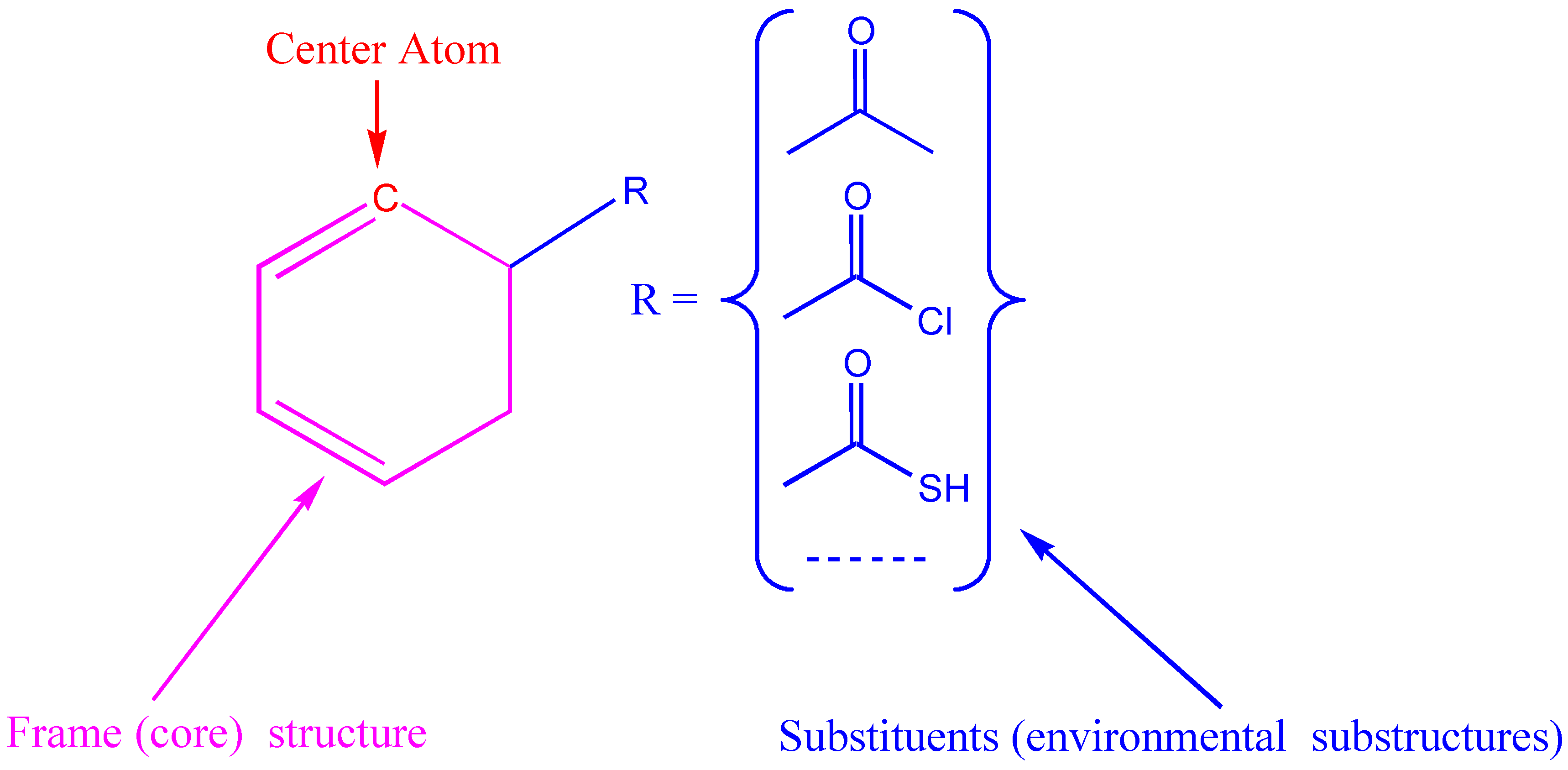

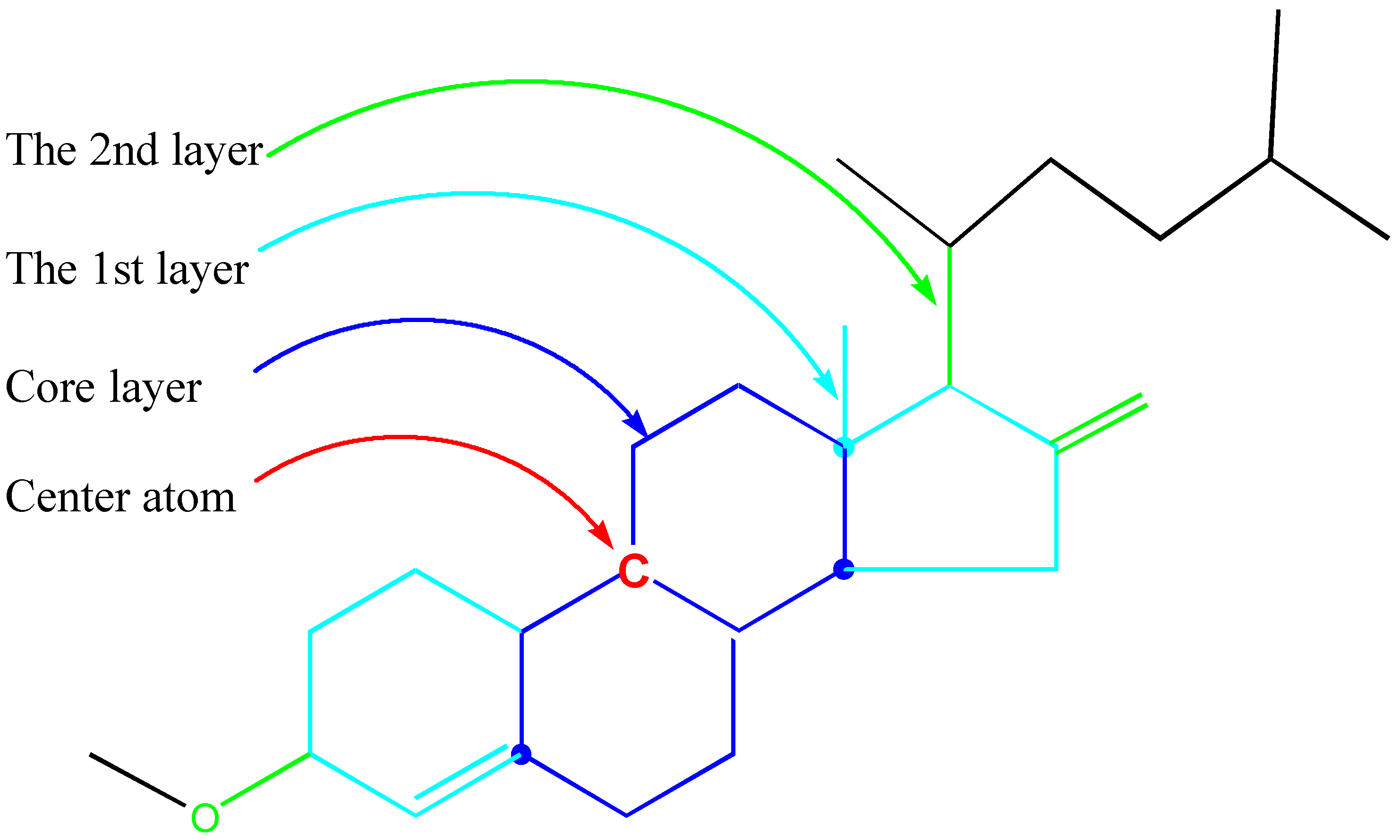



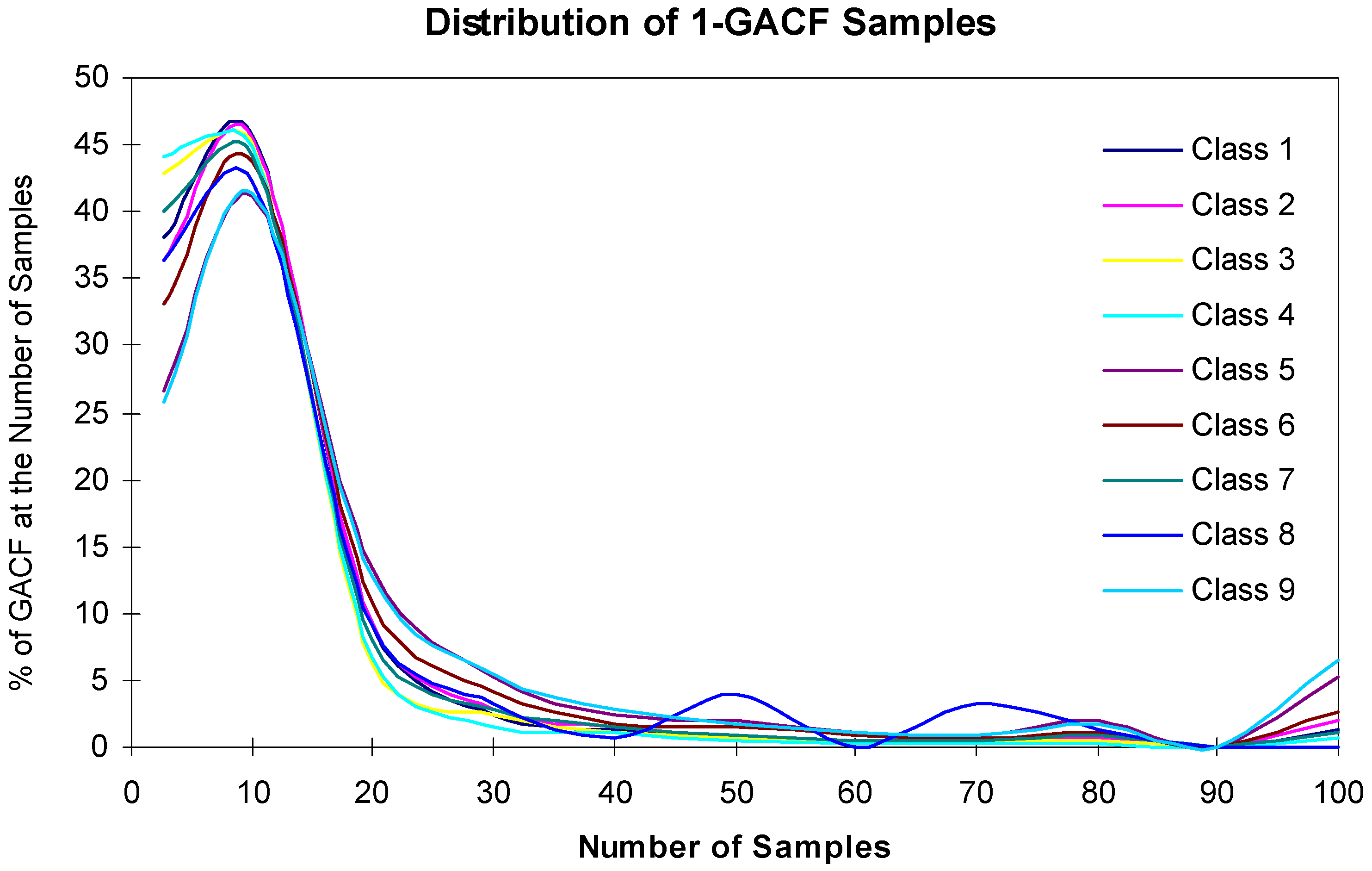
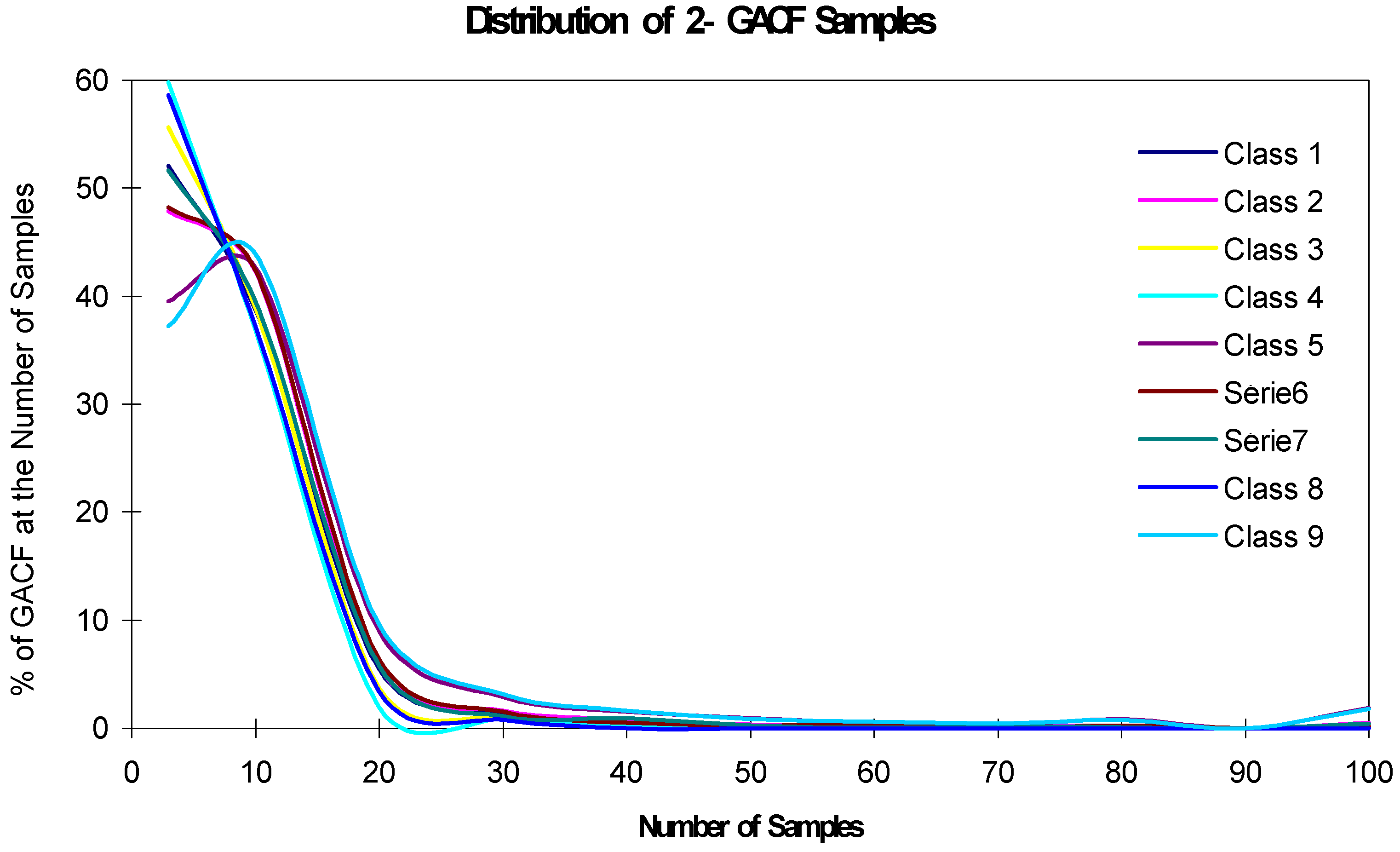
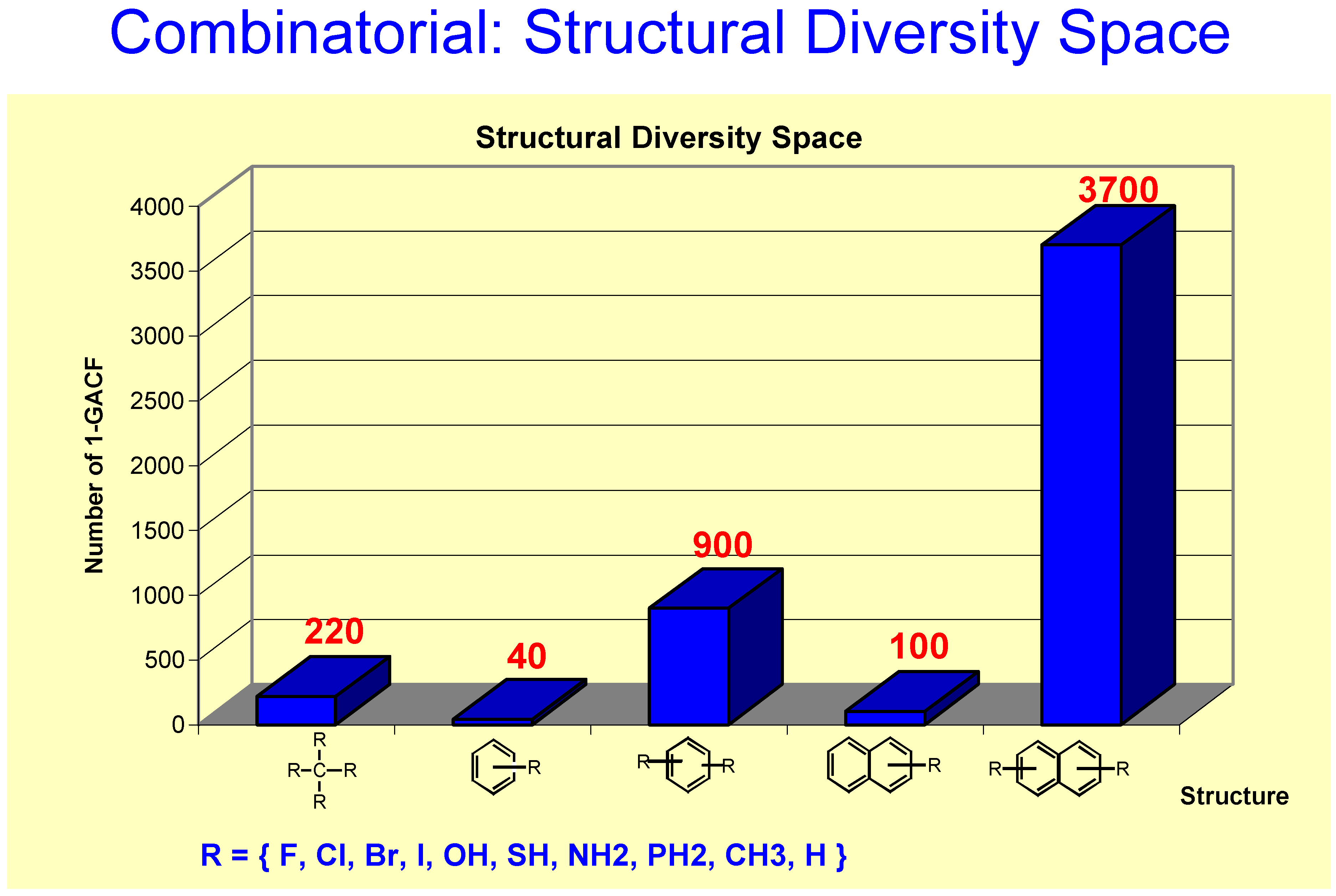
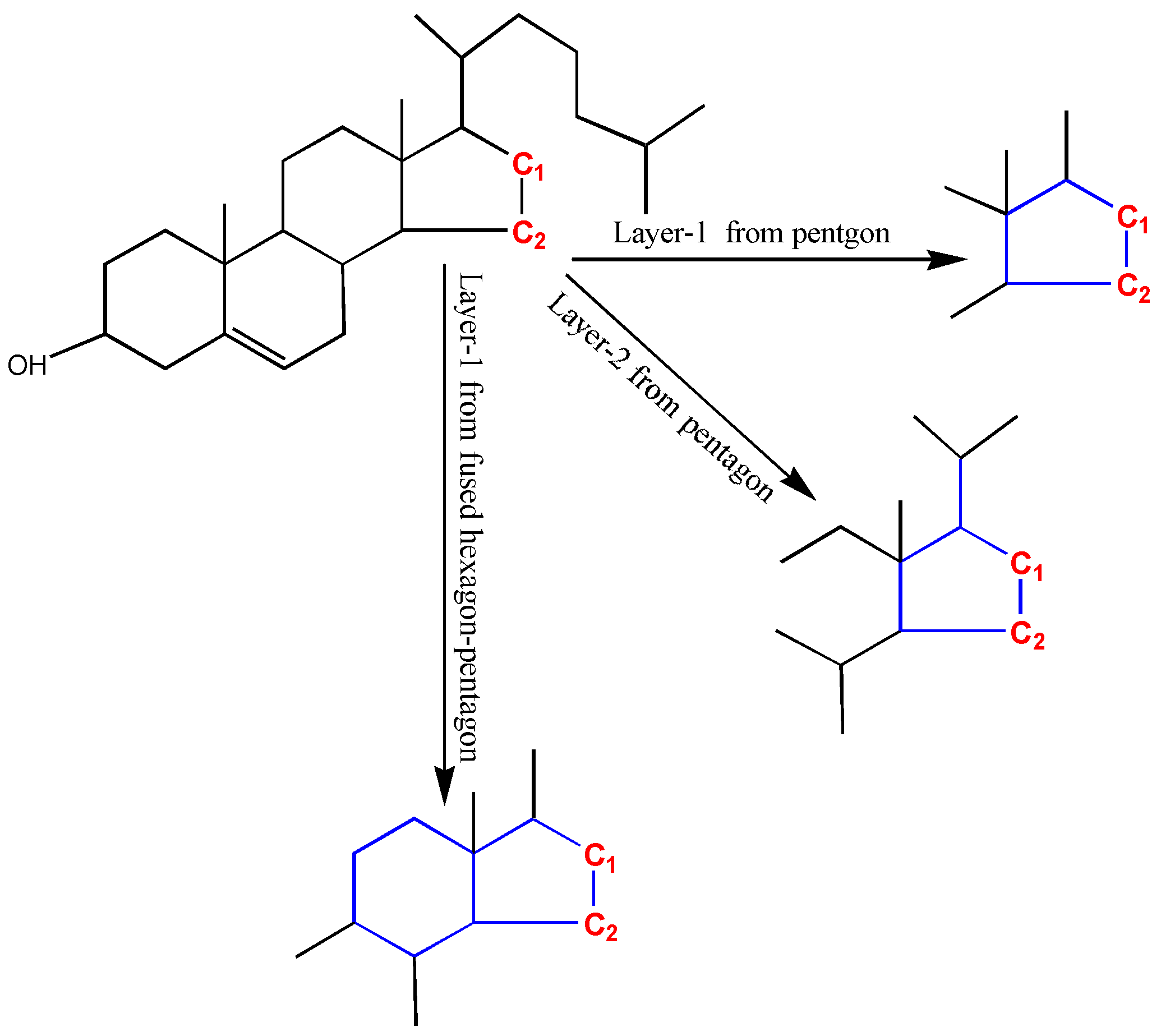
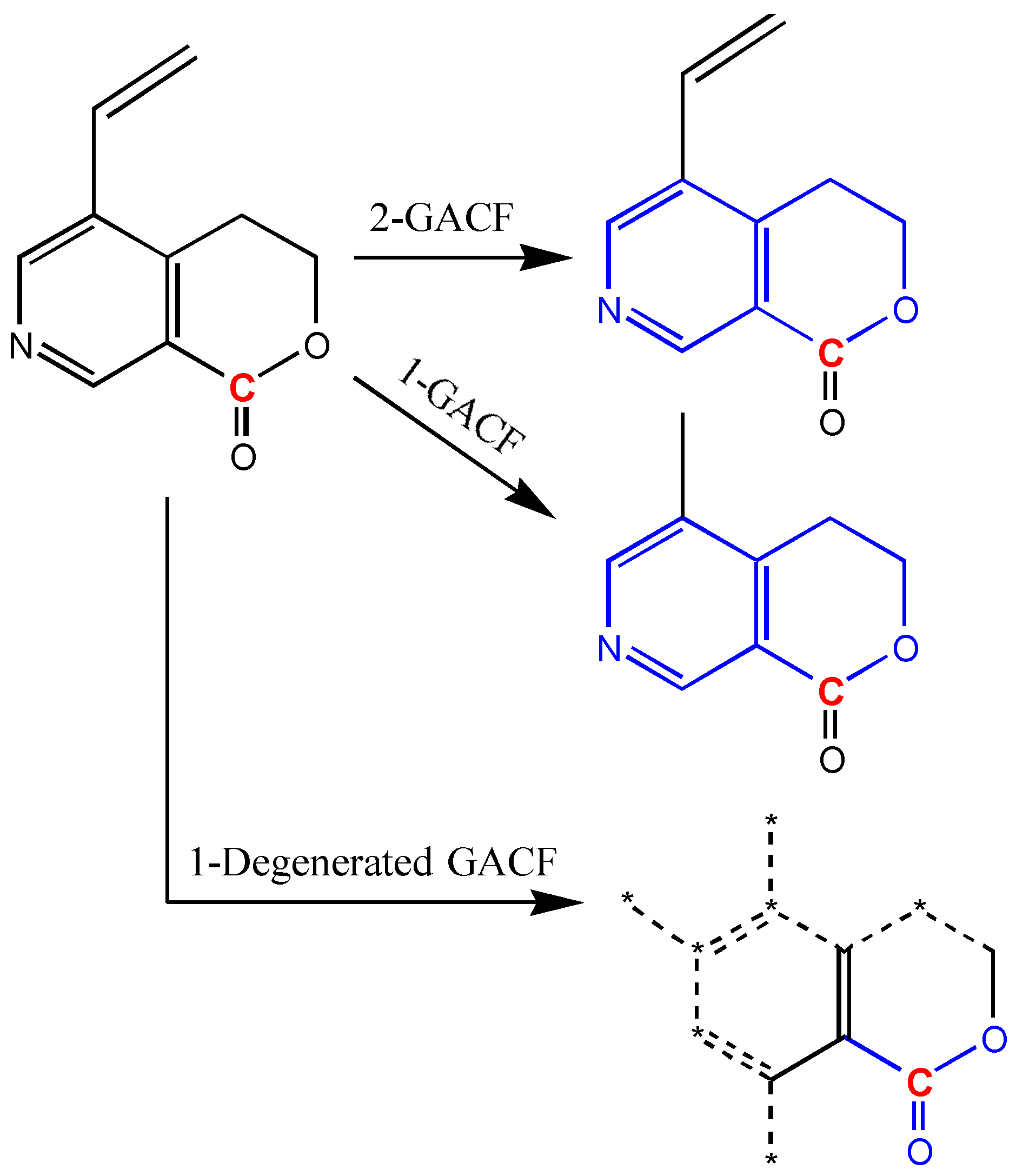
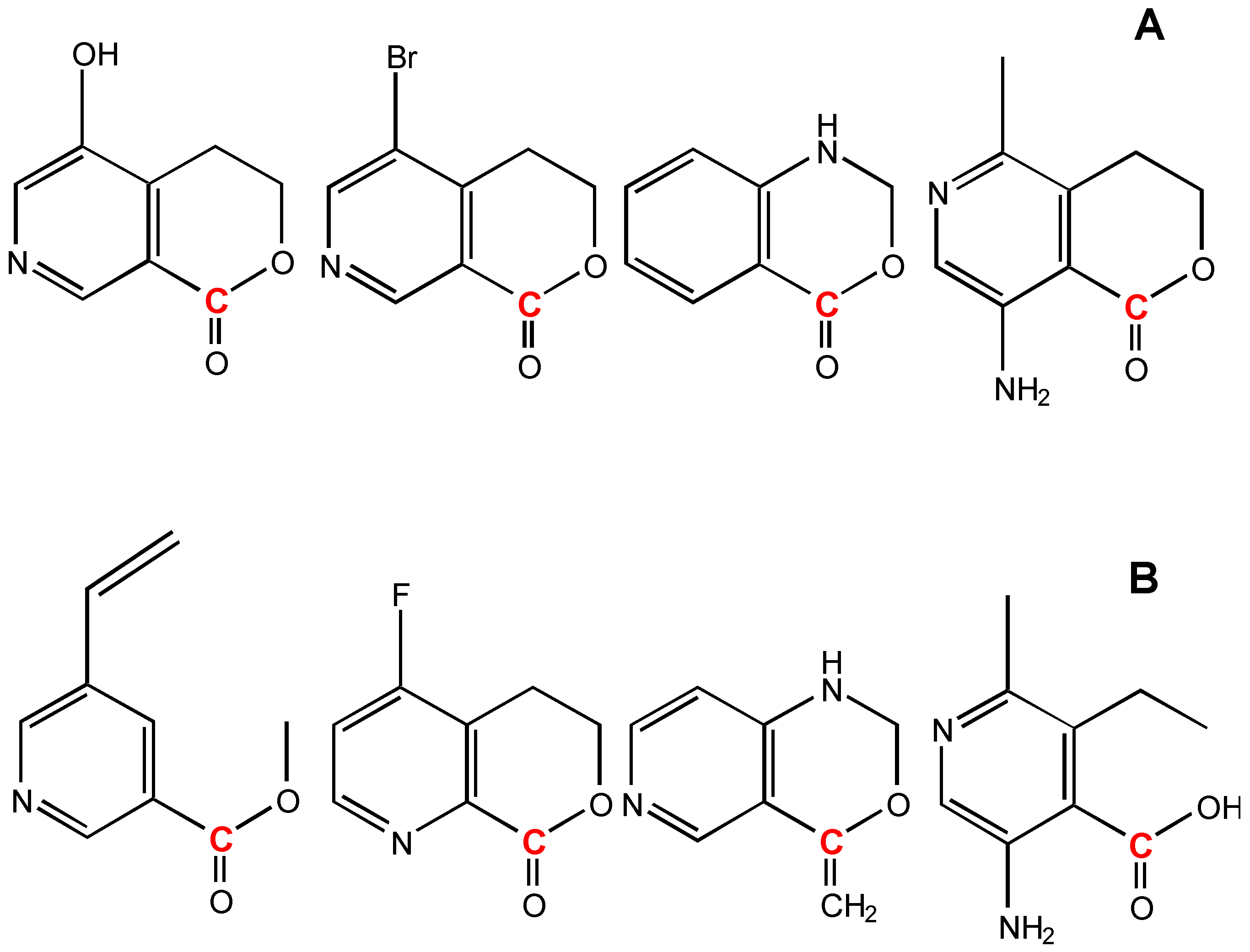
| Chemical Environment Classification | Example |
| Class 1: Independent non-aromatic single ring system |  |
| Class 2: Fused non-aromatic ring system |  |
| Class 3: Bridged ring system |  |
| Class 4: Spiro ring system |  |
| Class 5: Independent aromatic single ring system |  |
| Class 6: Fused aromatic ring system |  |
| Class 7: Conjugated system |  |
| Class 8: Cumulene system |  |
| Class 9: Acyclic system |  |
| GACF | class | layer | shift | median | maximum | minimum | σ | fn |
 | 9 | 1 | 116.87 | 117.80 | 122.81 | 108.1 | 3.40 | 263 |
| Structure | Label | Observed | ACD a, b | GACF a |
 | 1 | 127.24 | 120.12 | 126.32 |
| 2 | 139.43 | 136.95 | 139.12 | |
| 3 | 142.26 | 134.19 | 143.34 | |
| 4 | 126.46 | 120.10 | 121.05 | |
| 5 | 135.82 | 136.11 | 130.06 | |
| 6 | 120.68 | 123.68 | 123.73 | |
| 11 | 111.25 | 111.20 | 111.47 | |
| 15 | 168.79 | 161.24 | 168.68 | |
| 16 | 23.41 | 24.24 | 23.26 | |
 | 1 | 127.11 | 129.03 | 124.61 |
| 2 | 127.43 | 125.21 | 128.51 | |
| 3 | 134.97 | 158.47 | 126.83 | |
| 4 | 134.71 | 126.58 | 132.20 | |
| 5 | 115.21 | 122.91 | 128.85 | |
| 6 | 144.73 | 149.68 | 145.91 | |
 | 1 | 130.80 | 131.89 | 128.44 |
| 2 | 150.90 | 155.29 | 151.13 | |
| 4 | 150.20 | 148.88 | 147.80 | |
| 5 | 144.70 | 145.22 | 144.70 | |
| 6 | 120.90 | 119.74 | 116.95 | |
| 7 | 24.20 | 23.45 | 33.90 | |
| 8 | 66.10 | 54.15 | 66.41 | |
| 10 | 163.40 | 161.10 | 165.10 | |
| 12 | 129.50 | 130.10 | 135.04 | |
| 13 | 120.30 | 119.20 | 116.00 | |
 | 1 | 130.36 | 129.45 | 128.55 |
| 2 | 134.27 | 129.19 | 135.48 | |
| 3 | 129.36 | 134.10 | 129.82 | |
| 4 | 134.62 | 134.34 | 131.18 | |
| 5 | 138.37 | 152.63 | 143.34 | |
| 6 | 123.39 | 111.78 | 120.12 | |
| 7 | 19.36 | 20.24 | 19.08 | |
 | 1 | 13.10 | 12.04 | 12.70 |
| 2 | 30.10 | 28.83 | 27.63 | |
| 3 | 34.60 | 40.63 | 39.95 | |
| 4 | 28.80 | 32.49 | 30.11 | |
| 5 | 24.80 | 30.82 | 25.28 | |
| 6 | 33.90 | 35.51 | 32.51 | |
| 7 | 32.90 | 33.56 | 32.78 | |
| 8 | 20.40 | 20.22 | 19.35 | |
| 10 | 19.80 | 18.54 | 15.85 | |
 | 2 | 203.48 | 200.93 | 202.47 |
| 4 | 173.90 | 173.73 | 172.40 | |
| 5 | 36.92 | 35.89 | 35.47 | |
| 8 | 129.11 | 126.45 | 128.40 | |
| 9 | 129.11 | 128.03 | 128.40 | |
| 10 | 128.57 | 127.49 | 126.82 | |
| 11 | 135.47 | 133.01 | 136.23 | |
 | 1 | 143.40 | 141.61 | 143.98 |
| 2 | 126.60 | 130.88 | 125.90 | |
| 3 | 111.40 | 114.76 | 127.94 | |
| 4 | 142.80 | 142.56 | 135.22 | |
| 5 | 114.40 | 113.75 | 117.42 | |
| 6 | 151.30 | 148.02 | 148.96 | |
 | 1 | 131.51 | 128.76 | 131.18 |
| 2 | 138.66 | 133.45 | 138.06 | |
| 3 | 128.12 | 115.72 | 125.44 | |
| 4 | 139.00 | 151.67 | 144.40 | |
| 5 | 126.10 | 135.76 | 129.82 | |
| 6 | 129.02 | 134.69 | 130.31 | |
| 7 | 19.84 | 20.22 | 19.26 | |
 | 1 | 131.33 | 126.43 | 128.32 |
| 2 | 125.28 | 121.68 | 128.87 | |
| 3 | 128.89 | 121.81 | 125.44 | |
| 4 | 138.40 | 138.03 | 133.41 | |
| 5 | 130.40 | 130.88 | 136.32 | |
| 6 | 121.48 | 120.44 | 120.12 | |
| 8 | 163.17 | 160.98 | 162.65 | |
| 9 | 43.70 | 42.14 | 43.80 | |
| 10 | 166.90 | 163.51 | 167.00 | |
| 14 | 28.09 | 19.04 | 25.49 | |
 | 1 | 129.80 | 123.86 | 127.52 |
| 2 | 126.70 | 129.85 | 128.40 | |
| 3 | 134.5 | 127.83 | 127.43 | |
| 4 | 131.90 | 131.73 | 132.20 | |
| 5 | 127.30 | 132.60 | 126.33 | |
| 6 | 129.30 | 127.92 | 130.05 | |
| 7 | 127.50 | 128.10 | 135.47 | |
| 8 | 141.30 | 142.78 | 140.42 | |
| 9 | 128.90 | 126.40 | 124.28 | |
| 10 | 185.00 | 178.13 | 180.52 | |
| 11 | 131.60 | 128.38 | 127.58 | |
| 12 | 126.40 | 128.84 | 128.40 | |
| 13 | 131.60 | 131.10 | 127.52 | |
 | 2 | 100.50 | 123.15 | 107.14 |
| 3 | 123.60 | 116.50 | 122.00 | |
| 4 | 116.50 | 108.07 | 110.23 | |
| 5 | 105.60 | 125.14 | 105.60 | |
| 7 | 112.90 | 112.90 | 112.89 | |
 | 1 | 27.85 | 27.25 | 31.03 |
| 3 | 82.36 | 82.40 | 80.36 | |
| 5 | 55.12 | 55.34 | 55.95 | |
 | 1 | 81.10 | 79.51 | 80.17 |
| 2 | 106.00 | 107.09 | 105.38 | |
| 4 | 75.70 | 72.93 | 76.86 | |
| 5 | 77.50 | 78.00 | 76.16 | |
| 6 | 15.80 | 13.00 | 18.81 | |
| 9 | 63.40 | 63.19 | 62.57 |
© 1997 MDPI. All rights reserved
Share and Cite
Xu, J. 13C NMR Spectral Prediction by Means of Generalized Atom Center Fragment Method. Molecules 1997, 2, 114-128. https://doi.org/10.3390/20800114
Xu J. 13C NMR Spectral Prediction by Means of Generalized Atom Center Fragment Method. Molecules. 1997; 2(8):114-128. https://doi.org/10.3390/20800114
Chicago/Turabian StyleXu, Jun. 1997. "13C NMR Spectral Prediction by Means of Generalized Atom Center Fragment Method" Molecules 2, no. 8: 114-128. https://doi.org/10.3390/20800114




